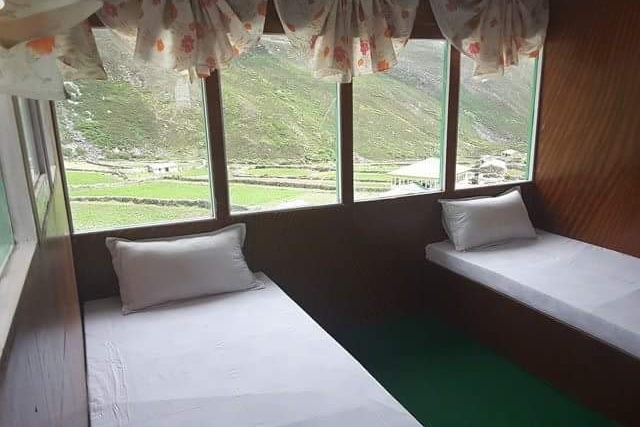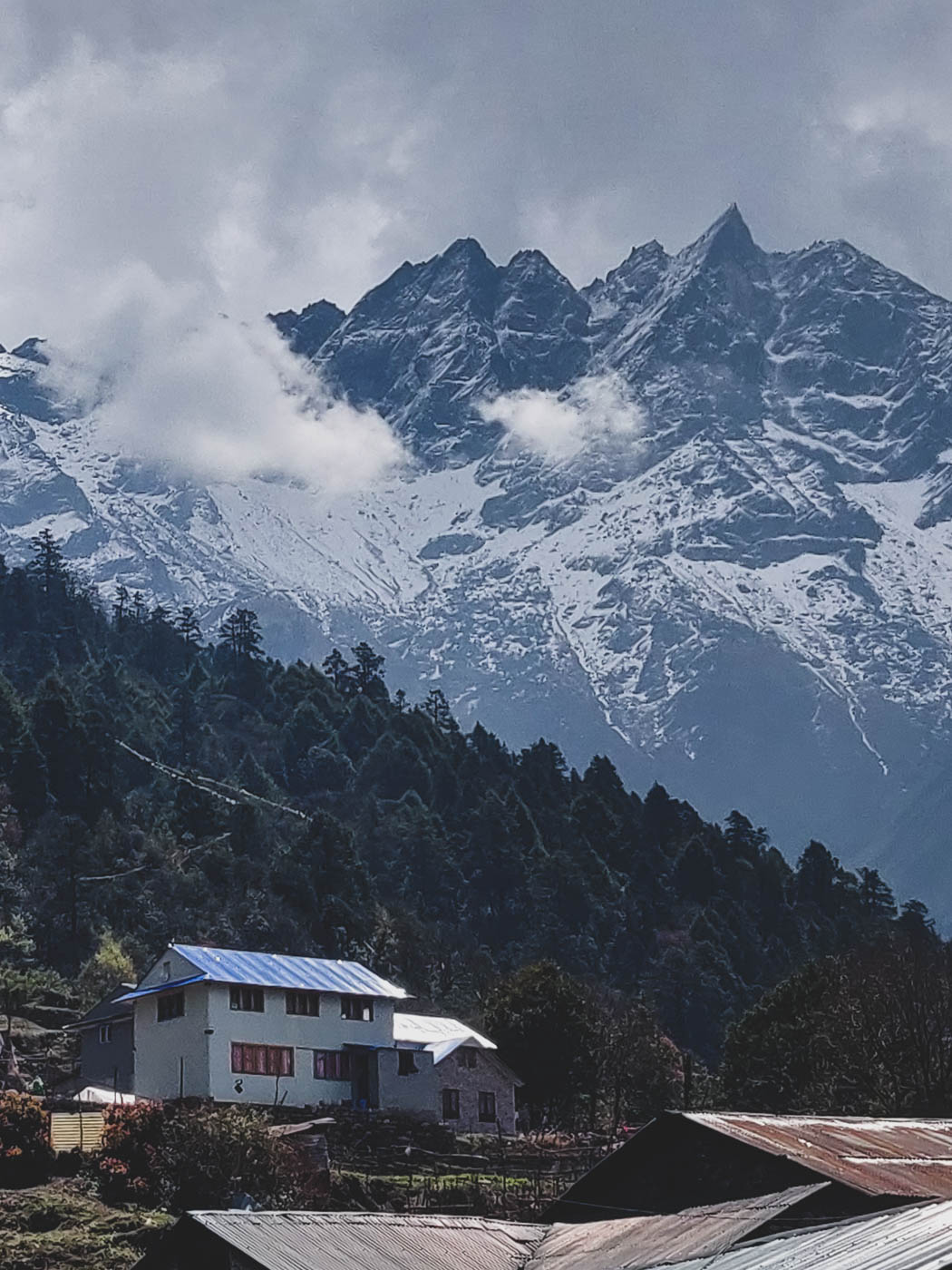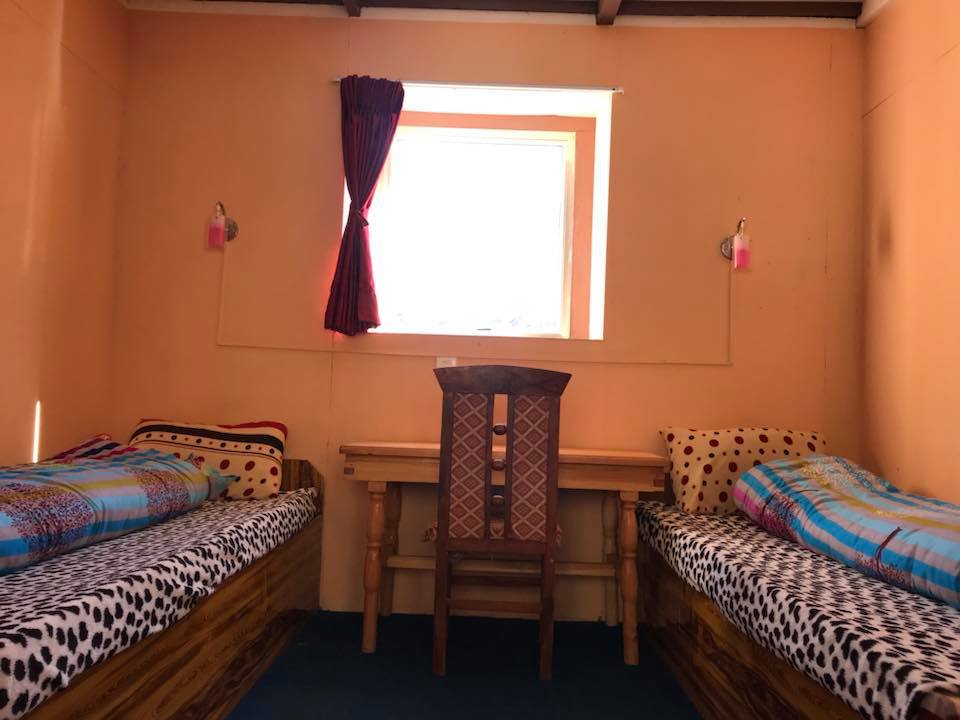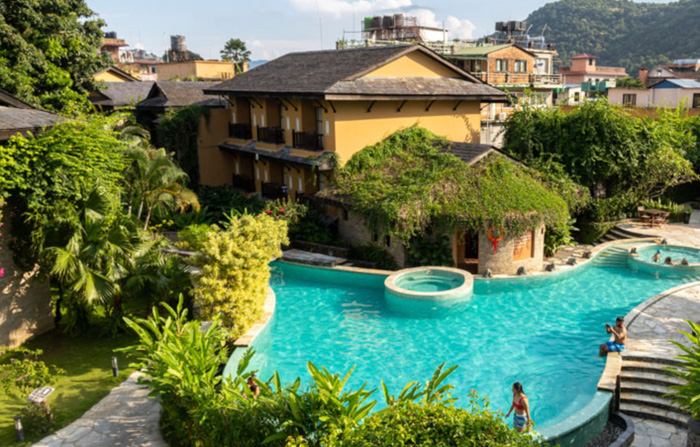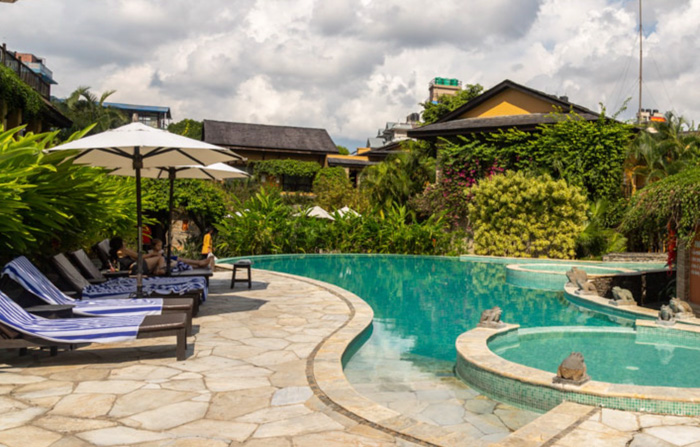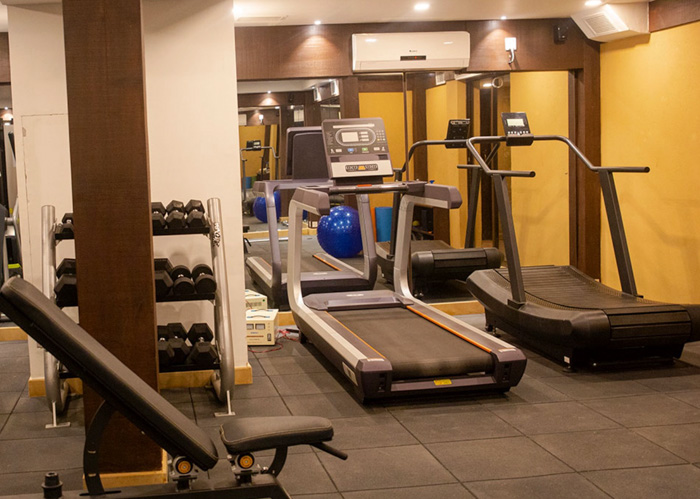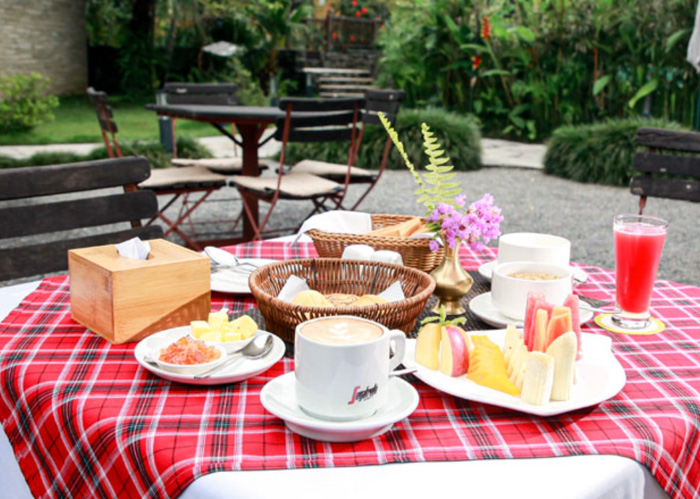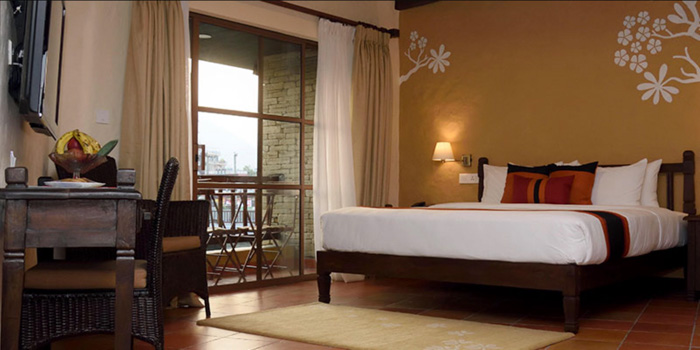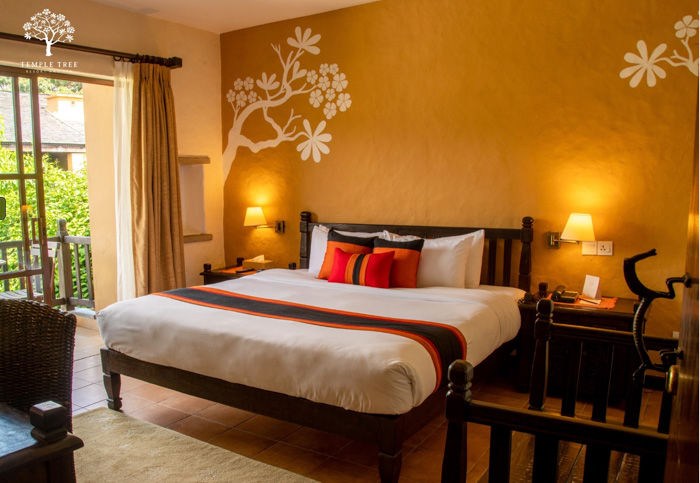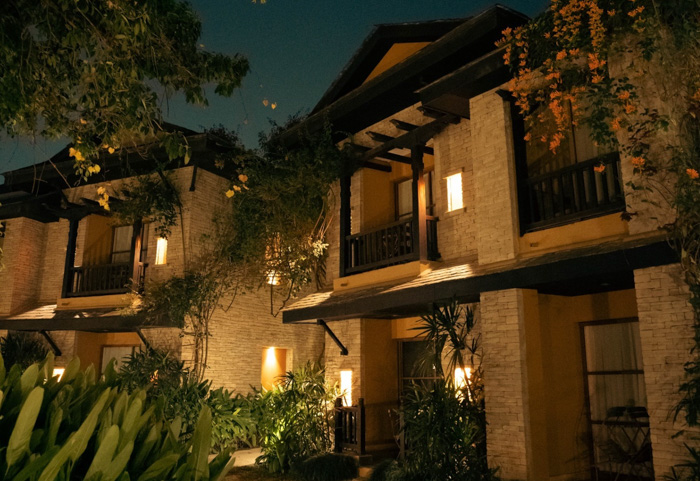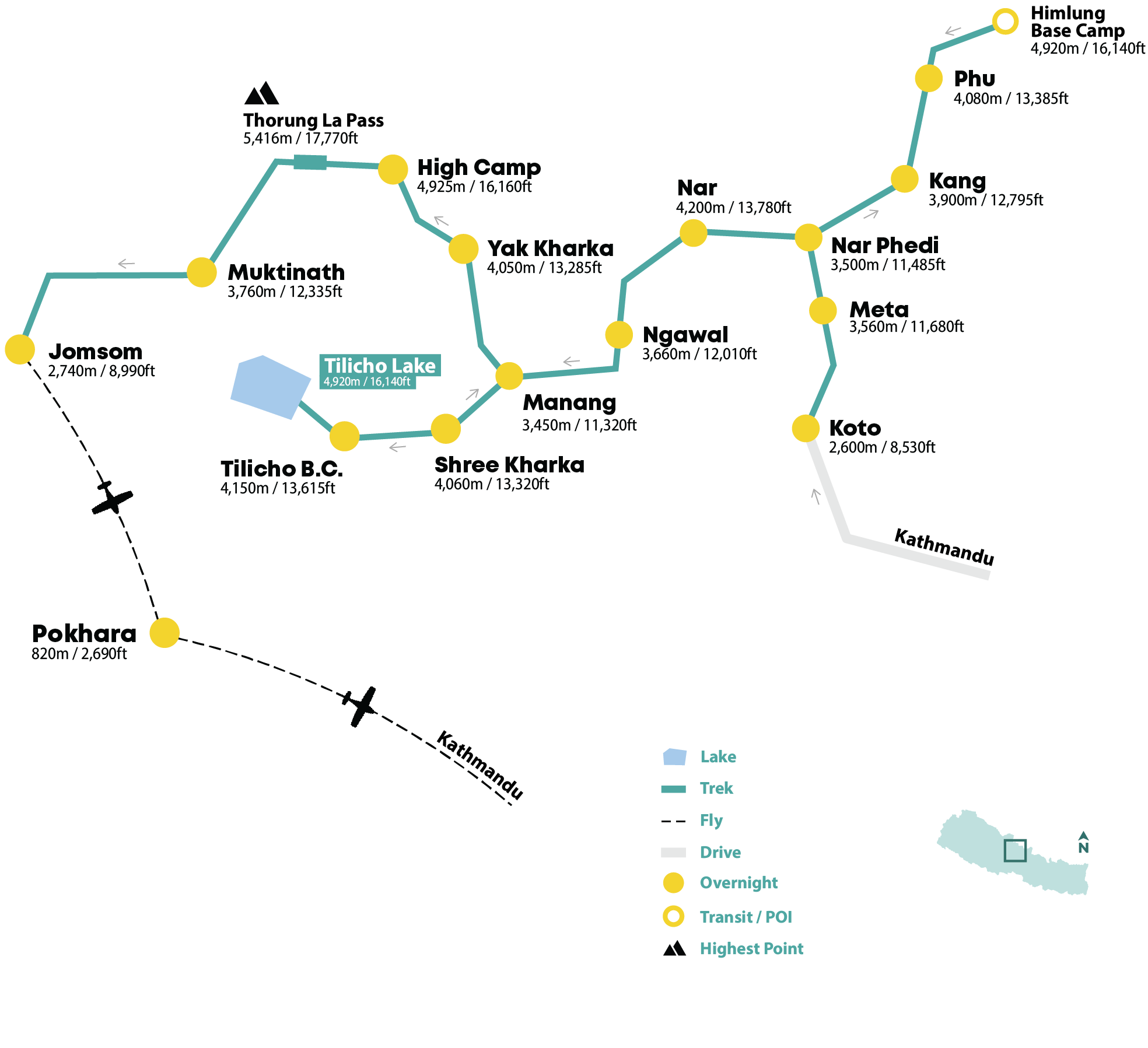|
Mountain Trek / Annapurna Region / Nepal Annapurna Circuit, Tilicho Lake and Nar Phu TrekNext tentative Date: Available as a Private Trek on a date of your preference.
An epic Himalayan adventure as the remote Nar Phu Valley, Tilicho Lake, and the Annapurna Circuit promises intrepid trekkers a kaleidoscope of Tibetan-influenced cultures, ancient monasteries, high passes, pristine high-altitude lakes, and panoramic mountain vistas in a single, awe-inspiring journey. |
Overview
Embark on an extraordinary adventure through the heart of the Annapurna region in Nepal, that combines the Nar Phu Valley, Tilicho Lake, and the Annapurna Circuit to create a trekking experience of unparalleled diversity and breathtaking landscapes. Starting from Besisahar, the journey unfolds through the isolated and culturally rich Nar Phu Valley with its Tibetan influences, ancient monasteries, and traditional villages like Phu and Nar. Trekkers ascend to the pristine Tilicho Lake, one of the world’s highest lakes, surrounded by towering peaks. Continuing through the Annapurna Circuit, the trail traverses a spectrum of terrains, from subtropical forests to high-altitude deserts, crossing iconic passes such as Kang La (5,306m / 17408ft) and Thorong La (5416m/17,769 ft). This immersive 3-in-1 trek offers a remarkable blend of cultural exploration and awe-inspiring natural beauty, making it a truly unforgettable Himalayan odyssey.
Highlights
| From terraced country fields, lush jungles, spectacular waterfalls, hot springs, apple orchards, pine forests, monasteries, wooden suspension bridges, scenic lakes, high pastures, and the rugged terrains above Manang valley, you’ll experience it all. | |
| Cross the high mountain passes of Thorung La Pass (5416m) that connects Manang and Mustang valleys, and Kang La Pass (5,306m / 17408ft) | |
| Circumnavigate the magnificent chain of the Annapurnas along the scenic Marshyangdi river. The trek offers some alluring views of Annapurna I (8,091m), Annapurna II (7,937m), Annapurna III (7,555m), Gangapurna, and Tilicho Peak. | |
| Explore the pristine Buddhist culture and arid desert landscape of Mustang, that is actually on the tip of the Tibetan plateau. | |
| Come across the remote, rustic and scenic mountain settlements along the trails- Nar, Phu, Bhraga, Ngawal Manang, and Marpha. | |
| Manang valley offers amazing side trips like Gangapurna lake, Ice lake and Milarepa cave. |
The Annapurna Circuit Trek is a popular and challenging trek in Nepal. Although it is more accessible compared to other treks, you will be crossing a high pass at an elevation of 5,416 m (17,769 ft). Getting to the start of the trek involves a long and bumpy ride along the tough winding mountain roads of Manang. To undertake this trek, you need a moderate to a good level of fitness and preparedness with endurance for multi-day trekking. Prior experience with high-altitude trekking is a big bonus. Our itineraries are designed with a slow pace and special consideration for altitude sickness. Daily trekking hours can range from 5-7 hours. If you have any pre-existing medical conditions, consult your healthcare provider before planning the trek.
There is a mix of basic and standard mountain lodges serving warm food and beverages all along the trail. Trails are wide and well-marked. With good logistical support from our experienced guides and porters (who will carry your weight throughout the trek), you will have an enjoyable experience in the mountains.
Best time to go
JanFebMarAprMayJunJulAugSepOctNovDec
JanFebMarAprMayJun
JulAugSepOctNovDec
| Group Sizepax | Fixed Departureprices per person | Regularprices per person |
| 2 | USD 2150 | |
| 4 - 7 | USD 1725 | |
| 8 & up | USD 1585 |
|
|
|
|
|
Prices valid until Dec 31st, 2026
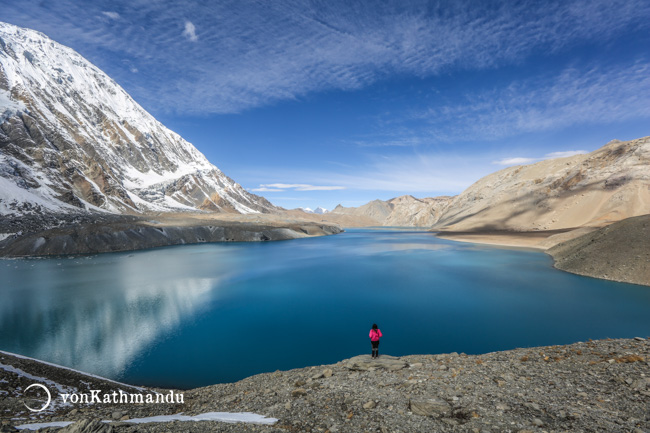
A trekker at Tilicho Lake
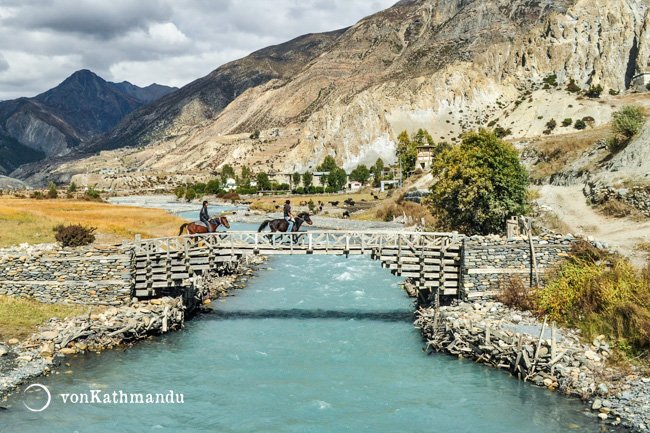
Horsemen cross the glacial Marshyangdi river
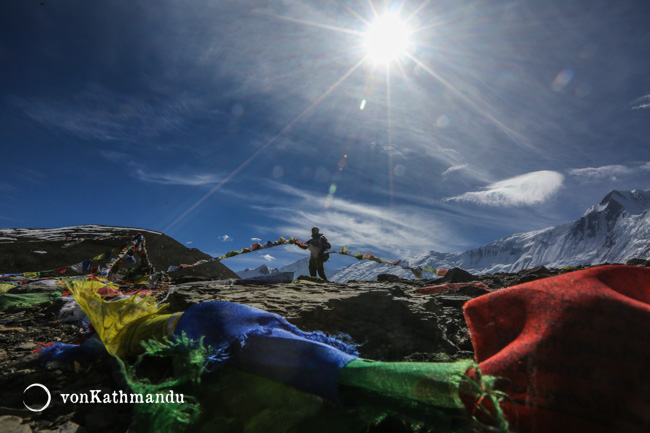
Prayer flags on the banks of Tilicho Lake
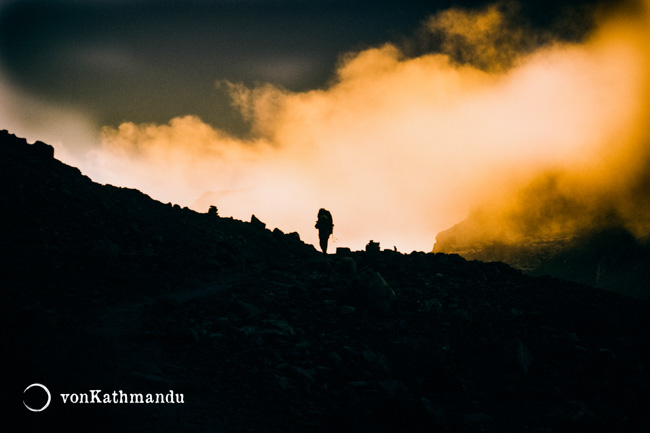
Crossing Thorung La early in the morning
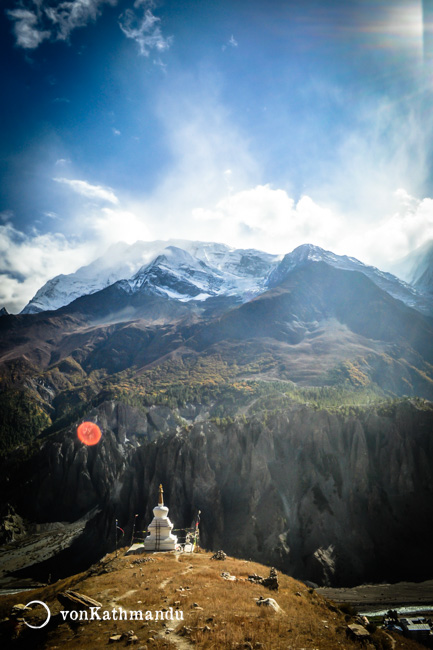
Annapurnas seen from a short climb up from Manang
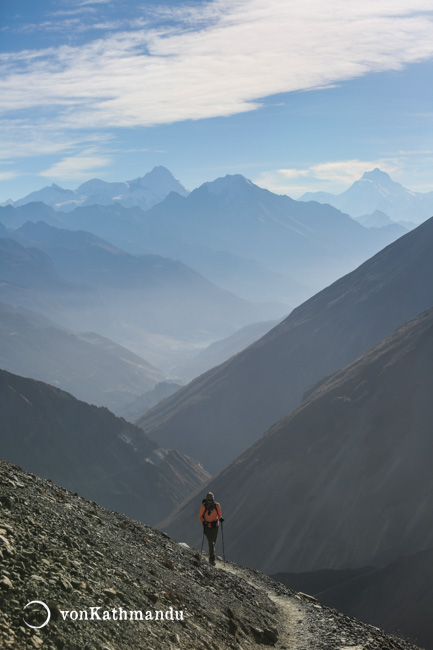
Inching towards Tilicho Lake, at almost 5,000m in elevation
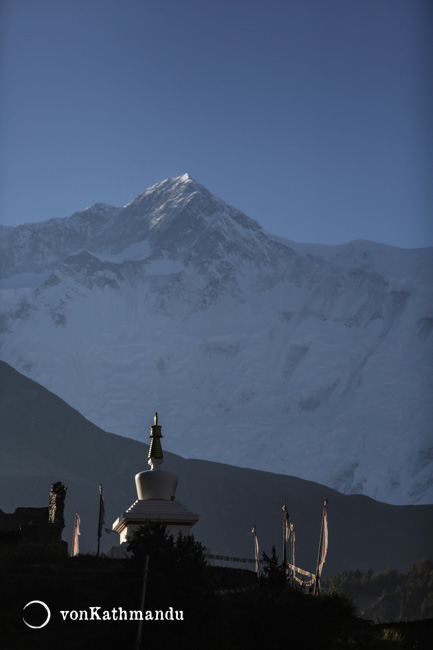
Buddhist chhortens are monuments are widely seen in the mountains
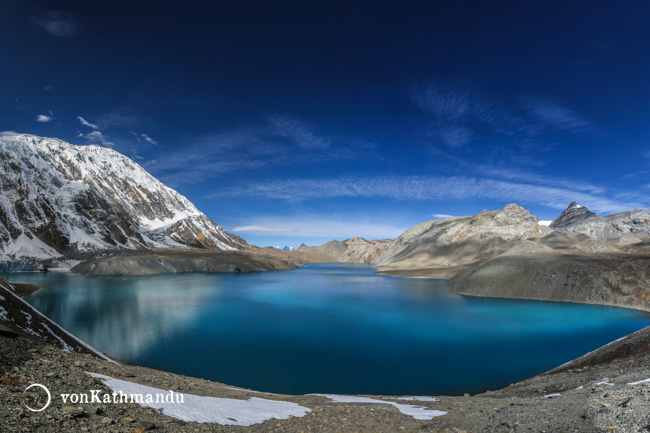
Emerald blue clors of Tilicho Lake
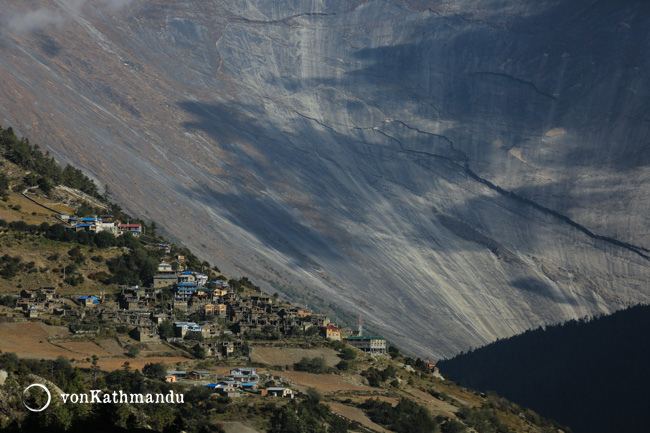
Upper Pisang village by the incredible rock formation of Swargadwaari, which translates to gateway to heaven
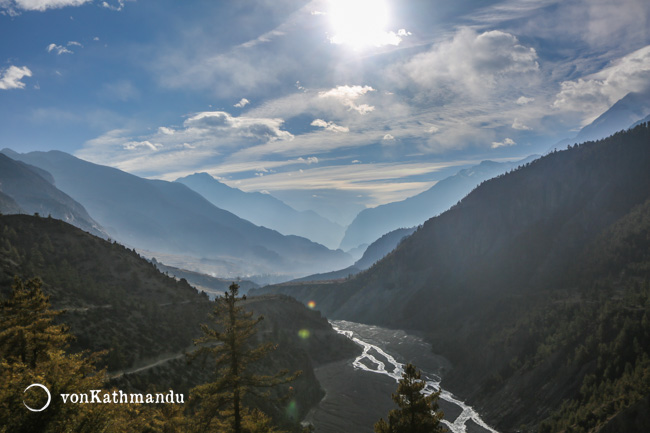
Marshyangdi river originates from Tilicho Lake and cuts through Manang valley
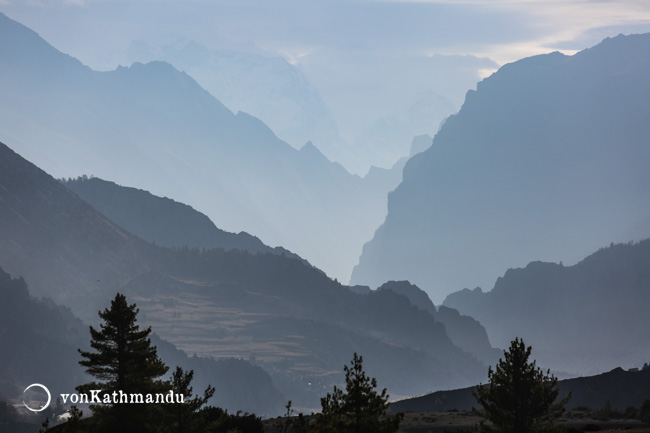
Rugged mountains dominate the horizon as you make your way up to Khangsar
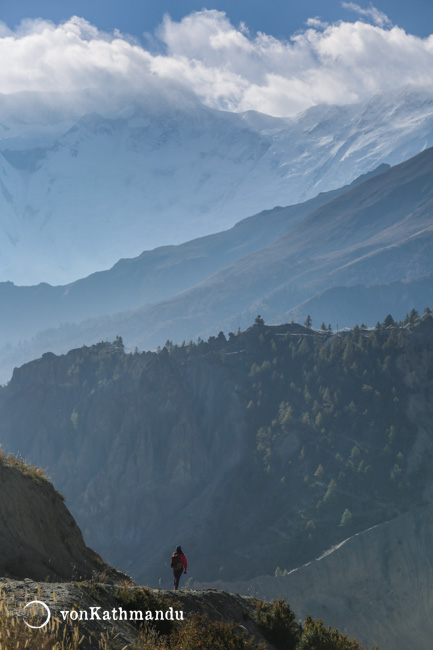
Alpine landscape of Manang valley
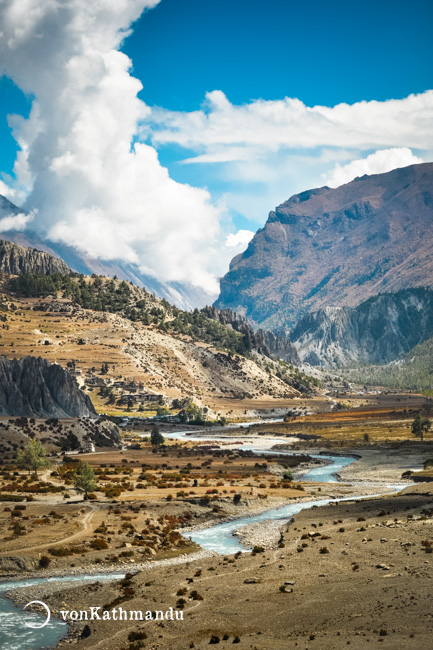
Braga village by the banks of turquoise Marshyangdi River
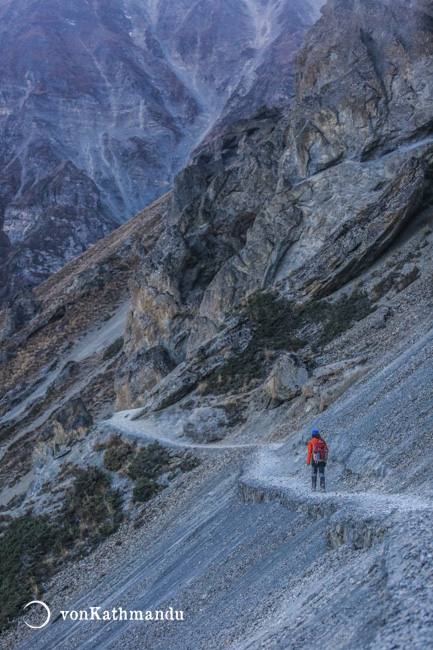
Landslide trails of Tilicho
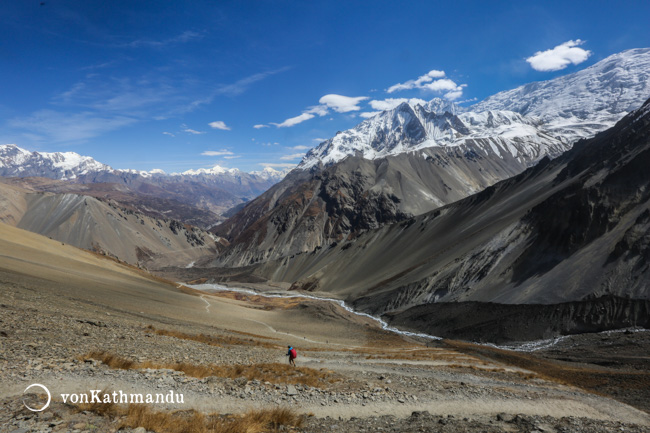
Trails pass thorugh barren terrains after crossing Khangsar, one of the last villages on the trek
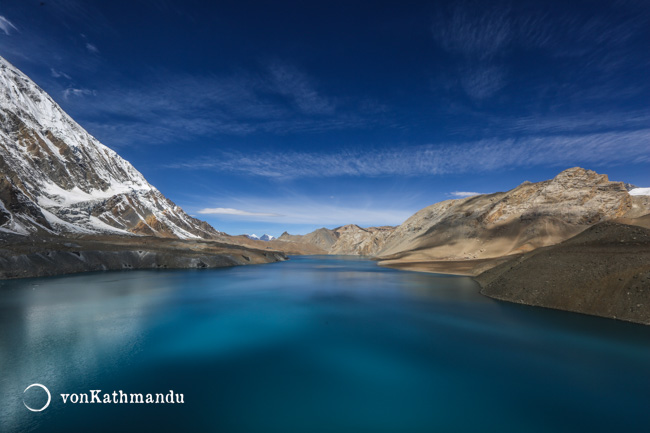
Emerald blue clors of Tilicho Lake
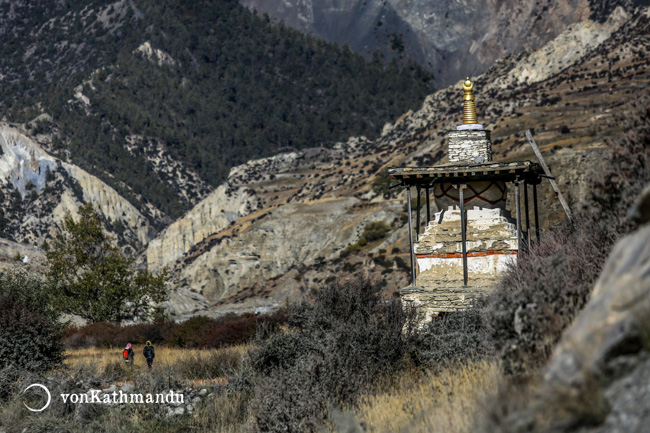
An old chhorten between Braga and the fabled Manang village
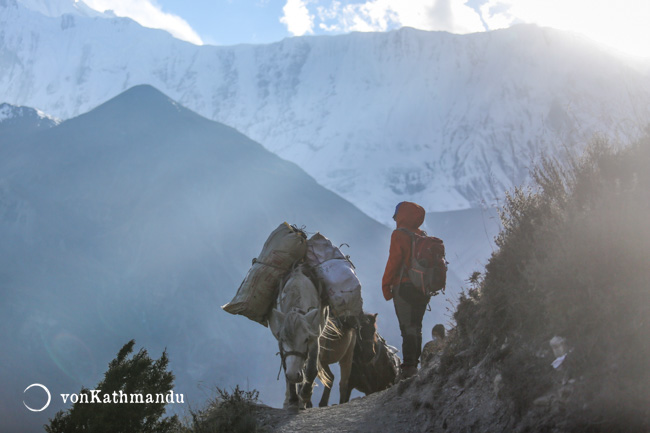
Horses carrying goods to Tilicho Base Camp
Itinerary
|
Day 1 |
Kathmandu - Besisahar - Dharapani |
|
|
Day 2 |
Dharapani - Koto |
|
|
Day 3 |
Koto - Meta |
|
|
Day 4 |
Meta - Kang |
|
|
Day 5 |
Kang to Phu Gaon |
|
|
Day 6 |
Phu Exploration (Acclimatization) |
|
|
Day 7 |
Phu to Nar Phedi |
|
|
Day 8 |
Nar Exploration (Acclimatization) |
|
|
Day 9 |
Nar to Ngawal via Kang La Pass |
|
|
Day 10 |
Ngawal to Bhraga |
|
|
Day 11 |
Bhraga - Ice Lake - Manang |
|
|
Day 12 |
Manang Exploration Day |
|
|
Day 13 |
Manang to Tilicho Base Camp |
|
|
Day 14 |
Tilicho Base Camp - Tilicho - Shree Kharka |
|
|
Day 15 |
Shree Kharka - Yak Kharka |
|
|
Day 16 |
Yak Kharka - Thorung Phedi |
|
|
Day 17 |
Thorong Phedi - Thorong La Pass - Muktinath |
|
|
Day 18 |
Muktinath - Lubra - Jomsom |
|
|
Day 19 |
Jomsom Exploration |
|
|
Day 20 |
Jomsom - Pokhara |
|
|
Day 21 |
Pokhara - Kathmandu |
|
|
Day 1 |
Kathmandu - Besisahar - Dharapani |
|
|
Drive from Kathmandu to Dharapani 8 to 9 hrs We embark on a long, adventurous, and scenic road trip on winding Himalayan roads to reach Dharapani today. The first half of the drive up to Besishahar is on the blacktopped highway while the second half is an off-road drive along the banks of the Marshyangdi river. Expect a number of waterfalls, gorgeous forests, mountain villages, and road bumps on the way. |
Meals Included: Breakfast
Accommodation: Mountain Lodge
|
Day 2 |
Dharapani - Koto |
|
|
Trek from Dharapani to Koto 6 to 7 hrs |
Meals Included: Breakfast
Accommodation: Mountain Lodge
|
Day 3 |
Koto - Meta |
|
|
Trek from Koto to Meta 7 to 8 hrs Restricted Area Permit checkpost is in Koto |
Meals Included: Breakfast
Accommodation: Mountain Lodge
|
Day 4 |
Meta - Kang |
|
|
Trek from Meta to Kang 4 to 5 hrs |
Meals Included: Breakfast
Accommodation: Mountain Lodge
|
Day 5 |
Kang to Phu Gaon |
|
|
Trek from Kang to Phu Gaon 3 to 4 hrs |
Meals Included: Breakfast
Accommodation: Mountain Lodge
|
Day 6 |
Phu Exploration (Acclimatization) |
|
|
Explore monasteries around Phu |
Meals Included: Breakfast
Accommodation: Mountain Lodge
|
Day 7 |
Phu to Nar Phedi |
|
|
Trek from Phu to Nar Phedi 5 to 6 hrs vernight at a monastery |
Meals Included: Breakfast
Accommodation: Mountain Lodge
|
Day 8 |
Nar Exploration (Acclimatization) |
|
|
Acclimatization hike around Nar |
Meals Included: Breakfast
Accommodation: Mountain Lodge
|
Day 9 |
Nar to Ngawal via Kang La Pass |
|
|
Trek from Nar to Ngawal 8 to 9 hrs |
Meals Included: Breakfast
Accommodation: Mountain Lodge
|
Day 10 |
Ngawal to Bhraga |
|
|
Trek from Ngawal to Bhraga 3 to 4 hrs |
Meals Included: Breakfast
Accommodation: Mountain Lodge
|
Day 11 |
Bhraga - Ice Lake - Manang |
|
|
Trek from Bhraga to Ice Lake to Manang 7 to 8 hrs At an elevation of 3500 meters, Manang is our perfect acclimatization spot. You can opt for one of the short yet remarkable side trips (2-4 hrs) like Gangapurna lake, a monastery above Manang, Milarepa cave, or Ice lake (6-7 hrs) if you’re feeling adventurous. |
Meals Included: Breakfast
Accommodation: Hotel
|
Day 12 |
Manang Exploration Day |
|
|
Manang exploration At an elevation of 3500 meters, Manang is our perfect acclimatization spot. You can opt for one of the short yet remarkable side trips (2-4 hrs) like Gangapurna lake, a monastery above Manang, Milarepa cave, or Ice lake (6-7 hrs) if you’re feeling adventurous. |
Meals Included: Breakfast
Accommodation: Hotel
|
Day 13 |
Manang to Tilicho Base Camp |
|
|
Trek from Manang to Tilicho Base Camp 7 to 8 hrs |
Meals Included: Breakfast
Accommodation: Mountain Lodge
|
Day 14 |
Tilicho Base Camp - Tilicho - Shree Kharka |
|
|
Trek from Tilicho Base Camp to Tilicho Lake 3 to 4 hrs Supposedly the World’s highest and unarguably one of the most stunning of all, Tilicho lake is a jewel of Manang. After an early morning start and 3-4 hours of hike, you will finally catch a glimpse of Tilicho at almost 5000 meters. It sits perfectly at the foot of the Tilicho peak surrounded by mountains and arid hills. |
|
|
Trek from Tilicho Lake to Shree Kharka 3 to 4 hrs Make the most out of your time here as we start descending soon to avoid afternoon winds and reach Shree Kharka before dark. |
Meals Included: Breakfast
Accommodation: Mountain Lodge
|
Day 15 |
Shree Kharka - Yak Kharka |
|
|
Trek from Shree Kharka to Yak Kharka 4 to 4.5 hrs |
Meals Included: Breakfast
Accommodation: Mountain Lodge
|
Day 16 |
Yak Kharka - Thorung Phedi |
|
|
Trek from Yak Kharka to Thorung Phedi 4 to 5 hrs From Yak Kharka, we walk up to a ridge and head down to cross the Marshyangdi river. After a steep climb and narrow downhill trails, we reach Thorung Phedi. This rugged place, surrounded by high rocky cliffs, is our camp for the night. |
Meals Included: Breakfast
Accommodation: Mountain Lodge
|
Day 17 |
Thorong Phedi - Thorong La Pass - Muktinath |
|
|
Trek from Thorong Phedi to Muktinath via Thorong La Pass 8 to 10 hrs The most challenging yet monumental day is here! We start off early and keep climbing with all the will and muscle power to Thorung La pass, one of the highest passes in the world at 5,416m/17,756ft. Find yourself surrounded by otherworldly views of the majestic Himalayas with the Annapurnas behind you. After rewarding ourselves with some photo opportunities and snacks, we start descending to Muktinath. The trail, from here onwards, is all downhill. |
Meals Included: Breakfast
Accommodation: Hotel
|
Day 18 |
Muktinath - Lubra - Jomsom |
|
|
Trek from Muktinath to Jomsom (via Lubra) 5 to 6 hrs Muktinath is an interesting sacred mountain town in the rainshadow area that houses the eternal flame. After a walk to the temple in the morning, we head down to Jomsom via Lubra, passing the arid landscapes and gorgeous meadowy patches. The airport town of Jomsom is our home for the night. We celebrate the end of the trip with some apple brandy ;) |
Meals Included: Breakfast
Accommodation: Hotel
|
Day 19 |
Jomsom Exploration |
|
|
Explore Kagbeni, Dhumba lake, or Marpha Villagem |
Meals Included: Breakfast
Accommodation: Hotel
|
Day 20 |
Jomsom - Pokhara |
|
|
Fly from Jomsom to Pokhara 20 mins After breakfast, we fly to Pokhara, enjoying the scenic views of the Mustang valley. |
|
|
Explore Pokhara The lake city of Pokhara has a lot to offer. Spend your time boating or paddleboarding in the lake, sightseeing, cycling, treating yourself to a lovely spa, or simply chilling by the lake. |
Meals Included: Breakfast
Accommodation: Temple Tree Resort and Spa
|
Day 21 |
Pokhara - Kathmandu |
|
|
Fly from Pokhara to Kathmandu |
Meals Included: Breakfast
Mountain Lodge |
X Close Accommodation Popup
X Close Popup
Nepal
Mountain lodges are the basic accommodation set up by locals to cater to trekkers in the trails. The common features across all lodges are standard rooms, a spacious and heated dining hall, and a restaurant with a menu. The rooms in mountain lodges generally have two or three twin beds with a mattress and blanket. If you are used to sleeping warm, we highly recommend bringing your own sleeping bag and liner. Other amenities could be a table, hanger, and dustbin but do not expect to have charging ports and attached toilets in the rooms. Moreover, it is mandatory to have meals in the facility you’re staying at.
Room Amenities
| • | Shared Toilet |
Property Amenities
| • | Restaurant and Bar | • | Outdoor Seating | • | Mountain Views |
Mountain Lodge |
X Close Accommodation Popup
X Close Popup
Nepal
Mountain lodges are the basic accommodation set up by locals to cater to trekkers in the trails. The common features across all lodges are standard rooms, a spacious and heated dining hall, and a restaurant with a menu. The rooms in mountain lodges generally have two or three twin beds with a mattress and blanket. If you are used to sleeping warm, we highly recommend bringing your own sleeping bag and liner. Other amenities could be a table, hanger, and dustbin but do not expect to have charging ports and attached toilets in the rooms. Moreover, it is mandatory to have meals in the facility you’re staying at.
Room Amenities
| • | Shared Toilet |
Property Amenities
| • | Restaurant and Bar | • | Outdoor Seating | • | Mountain Views |
Mountain Lodge |
X Close Accommodation Popup
X Close Popup
Nepal
Mountain lodges are the basic accommodation set up by locals to cater to trekkers in the trails. The common features across all lodges are standard rooms, a spacious and heated dining hall, and a restaurant with a menu. The rooms in mountain lodges generally have two or three twin beds with a mattress and blanket. If you are used to sleeping warm, we highly recommend bringing your own sleeping bag and liner. Other amenities could be a table, hanger, and dustbin but do not expect to have charging ports and attached toilets in the rooms. Moreover, it is mandatory to have meals in the facility you’re staying at.
Room Amenities
| • | Shared Toilet |
Property Amenities
| • | Restaurant and Bar | • | Outdoor Seating | • | Mountain Views |
Mountain Lodge |
X Close Accommodation Popup
X Close Popup
Nepal
Mountain lodges are the basic accommodation set up by locals to cater to trekkers in the trails. The common features across all lodges are standard rooms, a spacious and heated dining hall, and a restaurant with a menu. The rooms in mountain lodges generally have two or three twin beds with a mattress and blanket. If you are used to sleeping warm, we highly recommend bringing your own sleeping bag and liner. Other amenities could be a table, hanger, and dustbin but do not expect to have charging ports and attached toilets in the rooms. Moreover, it is mandatory to have meals in the facility you’re staying at.
Room Amenities
| • | Shared Toilet |
Property Amenities
| • | Restaurant and Bar | • | Outdoor Seating | • | Mountain Views |
Mountain Lodge |
X Close Accommodation Popup
X Close Popup
Nepal
Mountain lodges are the basic accommodation set up by locals to cater to trekkers in the trails. The common features across all lodges are standard rooms, a spacious and heated dining hall, and a restaurant with a menu. The rooms in mountain lodges generally have two or three twin beds with a mattress and blanket. If you are used to sleeping warm, we highly recommend bringing your own sleeping bag and liner. Other amenities could be a table, hanger, and dustbin but do not expect to have charging ports and attached toilets in the rooms. Moreover, it is mandatory to have meals in the facility you’re staying at.
Room Amenities
| • | Shared Toilet |
Property Amenities
| • | Restaurant and Bar | • | Outdoor Seating | • | Mountain Views |
Mountain Lodge |
X Close Accommodation Popup
X Close Popup
Nepal
Mountain lodges are the basic accommodation set up by locals to cater to trekkers in the trails. The common features across all lodges are standard rooms, a spacious and heated dining hall, and a restaurant with a menu. The rooms in mountain lodges generally have two or three twin beds with a mattress and blanket. If you are used to sleeping warm, we highly recommend bringing your own sleeping bag and liner. Other amenities could be a table, hanger, and dustbin but do not expect to have charging ports and attached toilets in the rooms. Moreover, it is mandatory to have meals in the facility you’re staying at.
Room Amenities
| • | Shared Toilet |
Property Amenities
| • | Restaurant and Bar | • | Outdoor Seating | • | Mountain Views |
Mountain Lodge |
X Close Accommodation Popup
X Close Popup
Nepal
Mountain lodges are the basic accommodation set up by locals to cater to trekkers in the trails. The common features across all lodges are standard rooms, a spacious and heated dining hall, and a restaurant with a menu. The rooms in mountain lodges generally have two or three twin beds with a mattress and blanket. If you are used to sleeping warm, we highly recommend bringing your own sleeping bag and liner. Other amenities could be a table, hanger, and dustbin but do not expect to have charging ports and attached toilets in the rooms. Moreover, it is mandatory to have meals in the facility you’re staying at.
Room Amenities
| • | Shared Toilet |
Property Amenities
| • | Restaurant and Bar | • | Outdoor Seating | • | Mountain Views |
Mountain Lodge |
X Close Accommodation Popup
X Close Popup
Nepal
Mountain lodges are the basic accommodation set up by locals to cater to trekkers in the trails. The common features across all lodges are standard rooms, a spacious and heated dining hall, and a restaurant with a menu. The rooms in mountain lodges generally have two or three twin beds with a mattress and blanket. If you are used to sleeping warm, we highly recommend bringing your own sleeping bag and liner. Other amenities could be a table, hanger, and dustbin but do not expect to have charging ports and attached toilets in the rooms. Moreover, it is mandatory to have meals in the facility you’re staying at.
Room Amenities
| • | Shared Toilet |
Property Amenities
| • | Restaurant and Bar | • | Outdoor Seating | • | Mountain Views |
Mountain Lodge |
X Close Accommodation Popup
X Close Popup
Nepal
Mountain lodges are the basic accommodation set up by locals to cater to trekkers in the trails. The common features across all lodges are standard rooms, a spacious and heated dining hall, and a restaurant with a menu. The rooms in mountain lodges generally have two or three twin beds with a mattress and blanket. If you are used to sleeping warm, we highly recommend bringing your own sleeping bag and liner. Other amenities could be a table, hanger, and dustbin but do not expect to have charging ports and attached toilets in the rooms. Moreover, it is mandatory to have meals in the facility you’re staying at.
Room Amenities
| • | Shared Toilet |
Property Amenities
| • | Restaurant and Bar | • | Outdoor Seating | • | Mountain Views |
Mountain Lodge |
X Close Accommodation Popup
X Close Popup
Nepal
Mountain lodges are the basic accommodation set up by locals to cater to trekkers in the trails. The common features across all lodges are standard rooms, a spacious and heated dining hall, and a restaurant with a menu. The rooms in mountain lodges generally have two or three twin beds with a mattress and blanket. If you are used to sleeping warm, we highly recommend bringing your own sleeping bag and liner. Other amenities could be a table, hanger, and dustbin but do not expect to have charging ports and attached toilets in the rooms. Moreover, it is mandatory to have meals in the facility you’re staying at.
Room Amenities
| • | Shared Toilet |
Property Amenities
| • | Restaurant and Bar | • | Outdoor Seating | • | Mountain Views |
Hotel |
X Close Accommodation Popup
X Close Popup
Room Amenities
| • | Free Wi-Fi | • | Room Service | • | Balcony | • | Private Bathroom | • | Hot Shower | • | Free Toiletries | • | Towels | • | Slippers | • | Power Socket | • | Daily Housekeeping |
Property Amenities
| • | Restaurant and Bar | • | Garden | • | Laundry | • | Outdoor Seating | • | Lake Views |
Hotel |
X Close Accommodation Popup
X Close Popup
Room Amenities
| • | Free Wi-Fi | • | Room Service | • | Balcony | • | Private Bathroom | • | Hot Shower | • | Free Toiletries | • | Towels | • | Slippers | • | Power Socket | • | Daily Housekeeping |
Property Amenities
| • | Restaurant and Bar | • | Garden | • | Laundry | • | Outdoor Seating | • | Lake Views |
Mountain Lodge |
X Close Accommodation Popup
X Close Popup
Nepal
Mountain lodges are the basic accommodation set up by locals to cater to trekkers in the trails. The common features across all lodges are standard rooms, a spacious and heated dining hall, and a restaurant with a menu. The rooms in mountain lodges generally have two or three twin beds with a mattress and blanket. If you are used to sleeping warm, we highly recommend bringing your own sleeping bag and liner. Other amenities could be a table, hanger, and dustbin but do not expect to have charging ports and attached toilets in the rooms. Moreover, it is mandatory to have meals in the facility you’re staying at.
Room Amenities
| • | Shared Toilet |
Property Amenities
| • | Restaurant and Bar | • | Outdoor Seating | • | Mountain Views |
Mountain Lodge |
X Close Accommodation Popup
X Close Popup
Nepal
Mountain lodges are the basic accommodation set up by locals to cater to trekkers in the trails. The common features across all lodges are standard rooms, a spacious and heated dining hall, and a restaurant with a menu. The rooms in mountain lodges generally have two or three twin beds with a mattress and blanket. If you are used to sleeping warm, we highly recommend bringing your own sleeping bag and liner. Other amenities could be a table, hanger, and dustbin but do not expect to have charging ports and attached toilets in the rooms. Moreover, it is mandatory to have meals in the facility you’re staying at.
Room Amenities
| • | Shared Toilet |
Property Amenities
| • | Restaurant and Bar | • | Outdoor Seating | • | Mountain Views |
Mountain Lodge |
X Close Accommodation Popup
X Close Popup
Nepal
Mountain lodges are the basic accommodation set up by locals to cater to trekkers in the trails. The common features across all lodges are standard rooms, a spacious and heated dining hall, and a restaurant with a menu. The rooms in mountain lodges generally have two or three twin beds with a mattress and blanket. If you are used to sleeping warm, we highly recommend bringing your own sleeping bag and liner. Other amenities could be a table, hanger, and dustbin but do not expect to have charging ports and attached toilets in the rooms. Moreover, it is mandatory to have meals in the facility you’re staying at.
Room Amenities
| • | Shared Toilet |
Property Amenities
| • | Restaurant and Bar | • | Outdoor Seating | • | Mountain Views |
Mountain Lodge |
X Close Accommodation Popup
X Close Popup
Nepal
Mountain lodges are the basic accommodation set up by locals to cater to trekkers in the trails. The common features across all lodges are standard rooms, a spacious and heated dining hall, and a restaurant with a menu. The rooms in mountain lodges generally have two or three twin beds with a mattress and blanket. If you are used to sleeping warm, we highly recommend bringing your own sleeping bag and liner. Other amenities could be a table, hanger, and dustbin but do not expect to have charging ports and attached toilets in the rooms. Moreover, it is mandatory to have meals in the facility you’re staying at.
Room Amenities
| • | Shared Toilet |
Property Amenities
| • | Restaurant and Bar | • | Outdoor Seating | • | Mountain Views |
Hotel |
X Close Accommodation Popup
X Close Popup
Room Amenities
| • | Free Wi-Fi | • | Room Service | • | Balcony | • | Private Bathroom | • | Hot Shower | • | Free Toiletries | • | Towels | • | Slippers | • | Power Socket | • | Daily Housekeeping |
Property Amenities
| • | Restaurant and Bar | • | Garden | • | Laundry | • | Outdoor Seating | • | Lake Views |
Hotel |
X Close Accommodation Popup
X Close Popup
Room Amenities
| • | Free Wi-Fi | • | Room Service | • | Balcony | • | Private Bathroom | • | Hot Shower | • | Free Toiletries | • | Towels | • | Slippers | • | Power Socket | • | Daily Housekeeping |
Property Amenities
| • | Restaurant and Bar | • | Garden | • | Laundry | • | Outdoor Seating | • | Lake Views |
Hotel |
X Close Accommodation Popup
X Close Popup
Room Amenities
| • | Free Wi-Fi | • | Room Service | • | Balcony | • | Private Bathroom | • | Hot Shower | • | Free Toiletries | • | Towels | • | Slippers | • | Power Socket | • | Daily Housekeeping |
Property Amenities
| • | Restaurant and Bar | • | Garden | • | Laundry | • | Outdoor Seating | • | Lake Views |
Temple Tree Resort and Spa |
X Close Accommodation Popup
X Close Popup
Pokhara, Nepal
Room Amenities
| • | Free Wi-Fi | • | Room Service | • | Air Conditioning | • | Balcony | • | TV | • | Mini Bar | • | Private Bathroom | • | Hot Shower | • | Free Toiletries | • | Towels | • | Slippers | • | Power Socket | • | Electric Kettle | • | Daily Housekeeping |
Property Amenities
| • | Restaurant and Bar | • | Child-friendly | • | Garden | • | Swimming Pool | • | Plunge Pool | • | Massage | • | Spa | • | Laundry | • | Fire Extinguisher | • | POS Machine | • | Outdoor Seating | • | Mountain Views |
Customize this trip
Take a heli back.
For those short on time or looking to add an exhilarating experience of flying over the majestic Himalayas, you have the option to charter a private helicopter on the way down. Inquire for prices and options!
Kathmandu Hotel and Transfers
-
If you’d like us to organize airport transfers and arrange your stay in Kathmandu or any other cities, let us know. We’re happy to give you options based on your preference, and book them for you.
Here’s one of our popular 2 days add-on: USD 185 per person:
- Airport pick up and drop off, facilitated by an English-speaking representative
- 2 nights in a four-star hotel in Kathmandu (Hotel Shankar or similar) on bed & breakfast plan and twin-sharing basis
